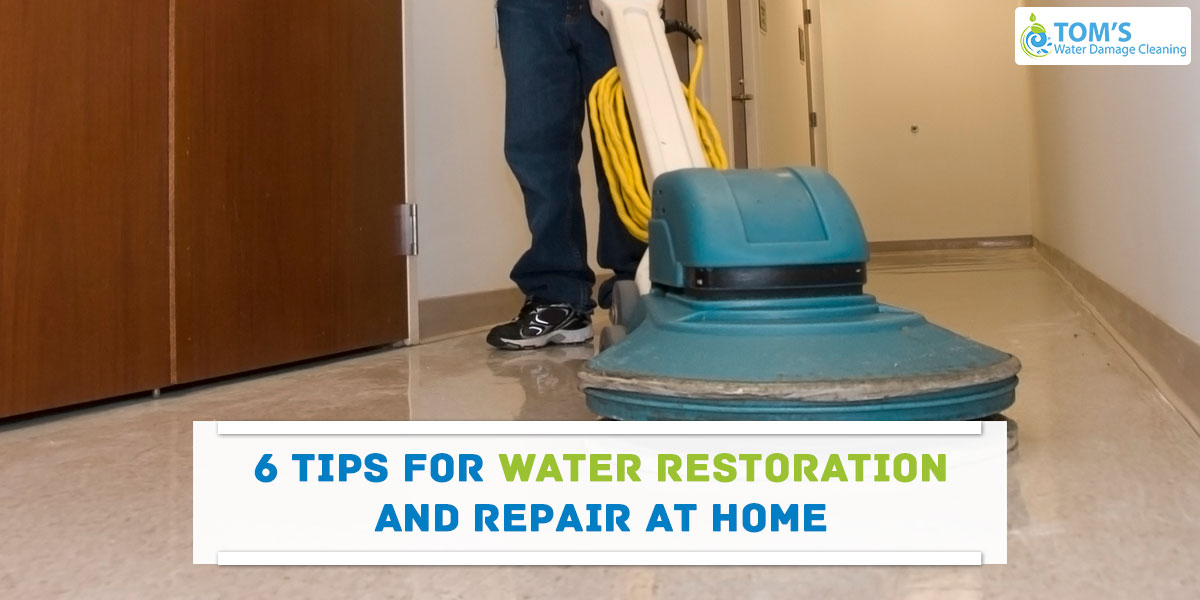The most common problem that homeowners usually face is water damage. Water damages are generally caused by heavy rain and storms, damaged or leaky pipes, broken water heaters, overflowing toilets and flooding and many other reasons. See water damages can either be major or minor and based on that you can choose to either repair them on your own or contact water damage restoration and repair professionals to handle all the work. Also, it’s very important that you address the issue of water damage at the earliest as not doing so can cause great property damage to your home. Let’s see how you can tackle house water damage restoration and repairs in case any damages do occur:
6 Tips For Water Damage Restoration And Repair
1. Move Valuable Belongings
Given that the water damage has been caused due to leaky pipes what you can do is shut off the main water supply to avoid further flooding. If your basement has started to accumulate water, you should immediately move all your valuable belongings to a dry place.
2. Do Not Switch On Electric Power
 Also, do not switch on electrical power until and unless the water damage has been restored; otherwise, if something goes wrong with the electric wiring and connections it would further add to your overall costs. Hence, switch off your electrical power supply and then take the necessary steps to tackle the water damage in your house.
Also, do not switch on electrical power until and unless the water damage has been restored; otherwise, if something goes wrong with the electric wiring and connections it would further add to your overall costs. Hence, switch off your electrical power supply and then take the necessary steps to tackle the water damage in your house.
3. Wear Gloves And Masks
If you are unable to get the professionals even after 2-3 days of water flooding then you certainly need to protect yourself from it. See accumulated and stagnant water can easily become a dwelling place for harmful bacteria and mould hence, make sure that you wear gloves and masks before entering that particular water-flooded place.
4. Remove The Water Manually
Given that there is not too much-accumulated water, you can attend to the problem on your own i.e. you can either remove it manually (with buckets and towels) or use a wet-dry vacuum or use a sump pump to remove the water. Well, the problem with removing water manually is that it can be tiring and hence, you can use a wet-dry vacuum but make sure that you are cautious while using the power supply of your home.
5. Desensitize The Area
Once you get all the water out of the flooded area, the next step is to clean and desensitize the area. This is necessary because there are possibilities of bacteria and mould perching themselves in wet and moist conditions.
6. Discard The Stuff
After you have cleaned and desensitized the area, the next step would be to discard the stuff that has been affected by the mould and bacteria. Stuff and structures such as furniture (especially wooden and upholstered), walls, etc. need to be discarded and treated before the situation gets any worse. If the situation has already gotten worse you can always contact the professionals who would easily do the job.
Moreover, as they say, “prevention is better than cure”, you can always take preventive measures before things really get out of hand. You can always prevent flooding by:
- Setting up a sump pump or a check valve for backup sewer
- Cleaning your gutter pipes at regular intervals and even extending them
However, it’s always advisable to contact the professionals such as tom upholstery cleaning who have the expertise and the equipment to properly handle water damage restoration and water damage repair jobs in Melbourne.
Related Article:
Top 6 Most Common Causes of Water Damage in Your Home








